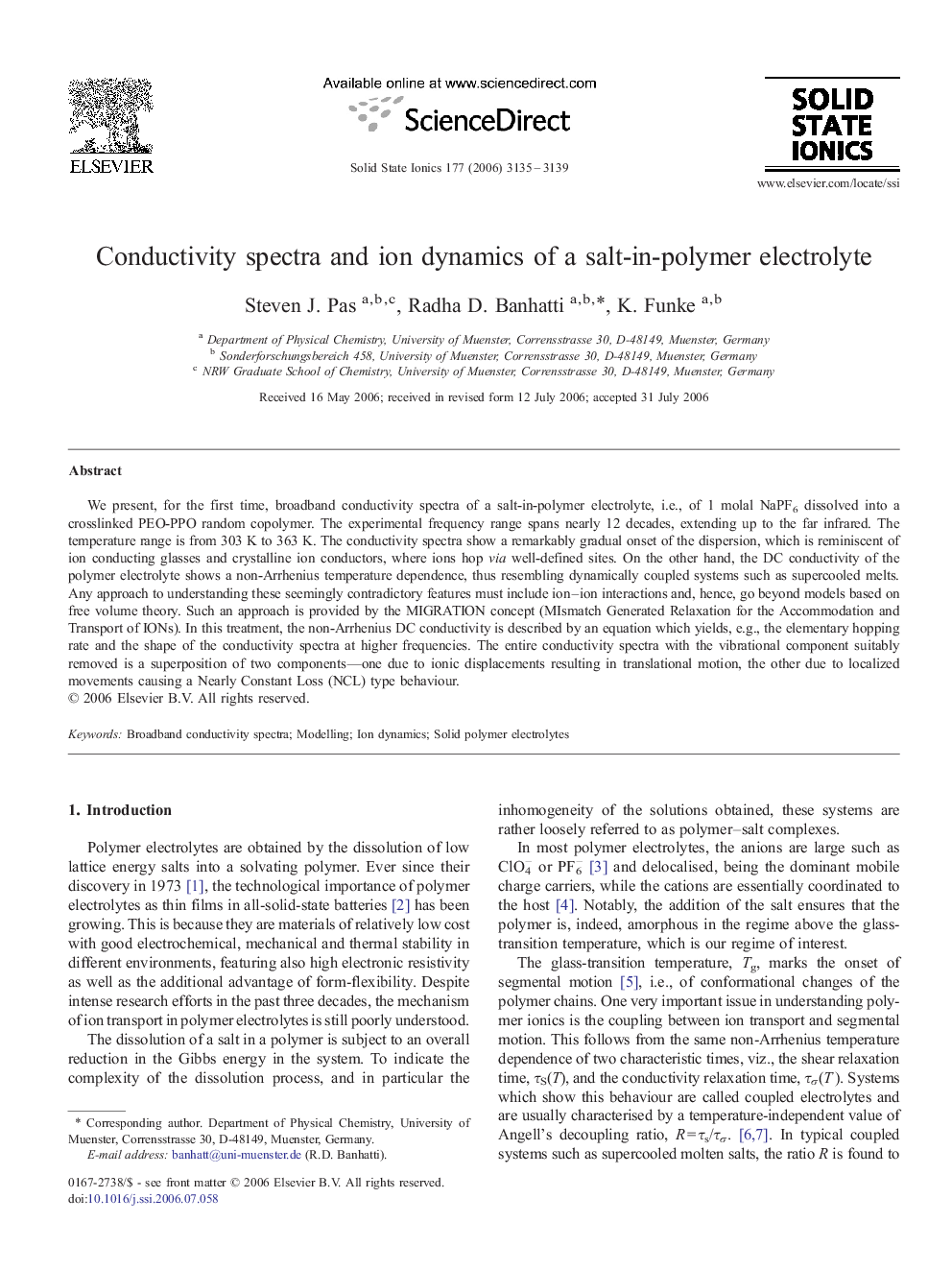| Article ID | Journal | Published Year | Pages | File Type |
|---|---|---|---|---|
| 1295410 | Solid State Ionics | 2006 | 5 Pages |
We present, for the first time, broadband conductivity spectra of a salt-in-polymer electrolyte, i.e., of 1 molal NaPF6 dissolved into a crosslinked PEO-PPO random copolymer. The experimental frequency range spans nearly 12 decades, extending up to the far infrared. The temperature range is from 303 K to 363 K. The conductivity spectra show a remarkably gradual onset of the dispersion, which is reminiscent of ion conducting glasses and crystalline ion conductors, where ions hop via well-defined sites. On the other hand, the DC conductivity of the polymer electrolyte shows a non-Arrhenius temperature dependence, thus resembling dynamically coupled systems such as supercooled melts. Any approach to understanding these seemingly contradictory features must include ion–ion interactions and, hence, go beyond models based on free volume theory. Such an approach is provided by the MIGRATION concept (MIsmatch Generated Relaxation for the Accommodation and Transport of IONs). In this treatment, the non-Arrhenius DC conductivity is described by an equation which yields, e.g., the elementary hopping rate and the shape of the conductivity spectra at higher frequencies. The entire conductivity spectra with the vibrational component suitably removed is a superposition of two components—one due to ionic displacements resulting in translational motion, the other due to localized movements causing a Nearly Constant Loss (NCL) type behaviour.
